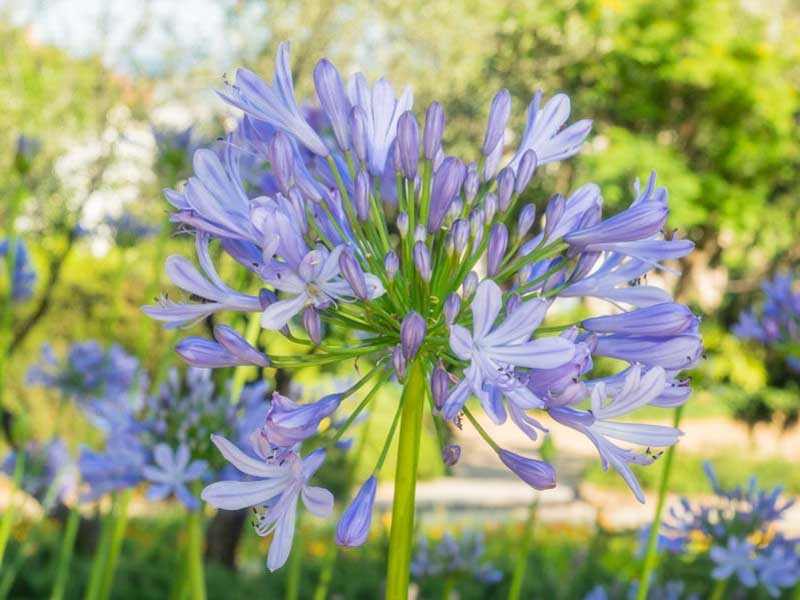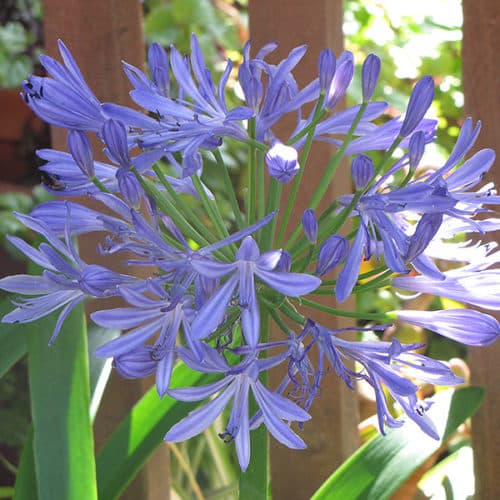Agapanthus Growing Problems: Soil, Sunshine, and Watering
Agapanthus Growing Problems: Soil, Sunshine, and Watering
Blog Article
Releasing the Secret to Effective Agapanthus Farming: Tips and Tricks for a Flourishing Garden
In the world of horticulture, growing agapanthus efficiently calls for a critical technique that incorporates numerous elements of plant care. By understanding the nuances of agapanthus growing, one can create an atmosphere where these plants flourish and bloom perfectly.
Planting Agapanthus: Best Practices
When growing Agapanthus, appropriate soil prep work is crucial for guaranteeing effective growth and development of these gorgeous flowers. Agapanthus, generally referred to as Lily of the Nile or African lily, thrives in well-draining dirt with a somewhat acidic to neutral pH degree - Agapanthus. Prior to planting, it is crucial to modify heavy clay soils with natural issue such as garden compost or peat moss to enhance water drainage and offer crucial nutrients for the plants
To plant Agapanthus, choose a place that obtains complete sunshine to partial color, as this will promote healthy and balanced growth and bountiful flowering. Dig an opening twice the diameter of the plant's root sphere and position the Agapanthus at the very same deepness it was previously expanding. Carefully backfill the hole with dirt, weighing down firmly to eliminate any air pockets around the roots.
Water the freshly planted Agapanthus completely and remain to maintain the dirt evenly wet, especially during the plant's energetic growing period. Agapanthus. Applying a well balanced plant food once a month can better support the plant's development and flowering. By adhering to these finest methods for planting Agapanthus, you can produce a magnificent screen of these fascinating flowers in your garden
Perfect Dirt Issues for Agapanthus
For optimal development and blooming success of Agapanthus plants, guaranteeing the soil problems are excellent is essential. Agapanthus prefers soil that is rich in nutrients, so including a balanced plant food during the expanding period can promote healthy development and vibrant blooms.

Watering and Feeding Tips
To make sure healthy and balanced development and dynamic blossoms, proper watering and feeding strategies are important for effective Agapanthus growing. Agapanthus plants benefit from normal watering, specifically throughout the growing season. It is suggested to water deeply once a week, ensuring the dirt is damp however not soaked. During heat or in pots, more frequent watering might be needed to avoid the dirt from drying out completely.
When it comes to fertilizing Agapanthus, a well balanced plant food with equivalent components nitrogen, phosphorus, and potassium can be used in the spring to promote healthy growth and blooming. Slow-release plant foods are ideal for supplying nutrients progressively over an extended duration. Avoid over-fertilizing, as this can bring about excessive foliage development at the expenditure of blossoms.
In addition, including raw material like garden compost right into the soil can enhance nutrient degrees and enhance dirt structure, helping in the overall wellness of the Agapanthus plants. By complying with these watering and fertilizing tips, garden enthusiasts can guarantee their Agapanthus plants grow and produce stunning display screens of flowers.
Pruning and Deadheading Techniques
Proper pruning and deadheading strategies play a crucial duty in maintaining the health and looks of Agapanthus plants, complementing the necessary practices of watering and fertilizing for successful cultivation. Pruning Agapanthus includes getting rid of invested blossom heads, yellowing or dead leaves, and general shaping of the plant to promote far better growth. Deadheading, the process of removing faded flowers, not only boosts the plant's look yet additionally encourages further blooming.
When deadheading Agapanthus, it is a good idea to trim off the flower stem at the base utilizing sharp, clean shears. This procedure reroutes the plant's energy try this website from seed production back into root and foliage development, promoting a healthier and much more durable plant. Regular deadheading can extend the growing duration of Agapanthus and stop self-seeding, which can bring about overcrowding.
In terms of trimming, Agapanthus typically gain from a light trim after flowering to clean the plant and urge fresh growth. Cutting down the invested blossom stems and eliminating any damaged or dead vegetation assists maintain the plant's vigor and general look. Nevertheless, it is important to prevent reducing into the crown of the plant, as this can deteriorate its health and wellness.

Protecting Agapanthus From Vermins and Diseases
Carrying out reliable pest and disease administration techniques is vital to protecting the health and wellness and vitality of Agapanthus plants in growing. One typical pest that influences Agapanthus is the Agapanthus borer, a caterpillar that passages right into the plant, triggering damage to the leaves and blossoms.
Along with parasites, Agapanthus are at risk to diseases such as root rot and fungal leaf spots. These issues can often be avoided by guaranteeing appropriate drainage and preventing overwatering. websites Impacted components of the plant need to be promptly gotten rid of to avoid additional spread if signs of illness show up. Fungicides may likewise be utilized as a therapy step, complying with the maker's directions thoroughly. By remaining alert and addressing insect and condition issues immediately, garden enthusiasts can help their Agapanthus prosper and flourish.

Verdict
Finally, successful growing of agapanthus calls for proper planting methods, excellent dirt conditions, ample watering and feeding, regular pruning and deadheading, and defense from insects and illness. By following these methods and pointers, gardeners can pop over to this site make certain a prospering yard full of lovely agapanthus blossoms. Agapanthus. Keep in mind to maintain regular treatment and interest to detail to advertise the wellness and durability of these magnificent plants
When planting Agapanthus, proper soil preparation is crucial for guaranteeing successful growth and development of these stunning flowers.Water the freshly planted Agapanthus thoroughly and proceed to keep the dirt evenly moist, especially during the plant's energetic expanding season.For optimal growth and growing success of Agapanthus plants, making sure the soil problems are optimal is important. When growing or hair transplanting Agapanthus, ensure the soil is well-prepared to supply the needed structure for the plants to develop themselves effectively. One typical insect that impacts Agapanthus is the Agapanthus borer, a caterpillar that passages into the plant, triggering damages to the fallen leaves and flowers.
Report this page